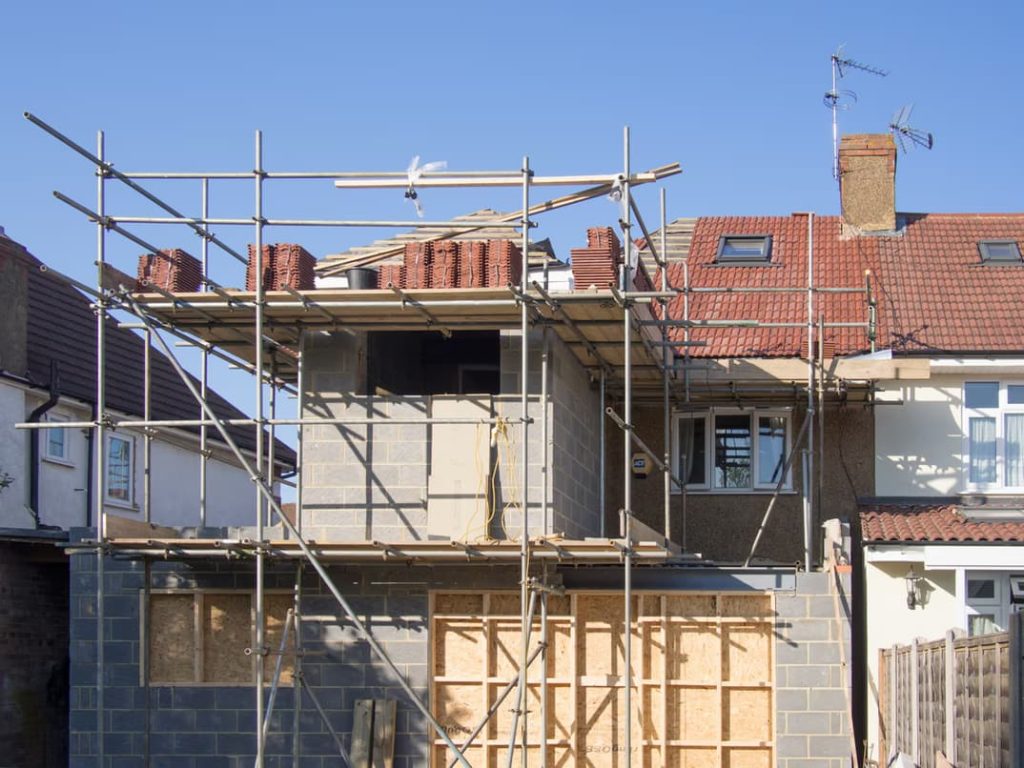Renovating your home is a lot of work and it can be difficult to determine if you’re making the right decisions. It’s important to avoid mistakes that will weaken your house structure and cause further damage.
For example, when demolishing walls, you need to make sure there are no hidden cables in the wall before you start anything – and when you’re doing flooring, make sure the concrete has cured completely before installing any new flooring, or else there could be serious problems with rotting. Let’s explore these mistakes and how to fix them.
Table of Contents
Poor Roof Construction
If your roof is made of tiles, make sure they adhere to the roof structure well. If you see any loose tiles, make sure to replace them as soon as possible – once the whole layer comes off, water will leak through into your ceiling and deteriorate it quickly.
If your home was built before the 1930s, your roof was likely built with shingles, which are not as strong as tiles. If you’re in Canada, consider contacting T.Simpson roofing for more information on how proper roofing needs to be executed.
The advantage of shingles is that they can be easily replaced – if you see any signs of wear and tear on them (cracks or missing pieces), replace them immediately before rainwater penetrates the shingles and leaks through into your ceiling.
Sagging Floors
If your floors are sagging, this could mean there’s water damage or termite infestation. You’ll need to act quickly if this has happened – first things first, do not walk on the floor until it is deemed safe(this also goes for stairs). If there’s water damage, you will need to dry out the area completely using dehumidifiers and fans.
When the area is completely dry, you can start tackling the actual issue that caused the floor to sag in the first place. For termite infestation, you will need to get rid of all wood from affected areas – this means getting rid of wooden floorboards and replacing them with tiles if needed.
Cables Behind Wall
When demolishing a wall, make sure there are no cables behind it before anything else! If you damage a cable or damage around a cable while digging for pipes or whatnot, there could be serious problems with shock or fire hazards.
You can avoid damaging cables by using an electrical testing device which is very easy to use – simply insert your metal probe into every hole until it is touching live wire (it beeps if it’s touching one). If there is any live wire present, mark the spot and make sure to avoid it while you’re digging.
Excess Moisture Under Floorboards or Basement Areas
Make sure your concrete has cured completely before putting down flooring anywhere. If small cracks appear in your concrete foundation or walls after installation, don’t panic! This is normal behavior for freshly laid concrete (cracks that are 1/8th inch wide or less).
However, these cracks can cause problems down the line because moisture can seep through them and weaken the foundation of your house. If you put down flooring too early, moisture could cause mold build-up which can severely damage the structure of your house.
Even if there isn’t visible mold, an excess of moisture underneath can weaken the foundation of your home (leading to cracks) – not only that, mold spores are extremely hazardous for human health as well! It’s best to keep humidity levels low inside your home at all times by using dehumidifiers or air purifiers.
Not Insulating Windows and Doors
If you’re renovating your windows, make sure to insulate them properly. One way to do this is by installing thermal curtains on the inside of the window – these will prevent heat from escaping or entering through these windows.
You can also use things like weather stripping around the edges of the windows so they are airtight for maximum insulation. This is one area that most people forget about when it comes to renovation – you need all parts of your home (even windows) to be well insulated! As for doors, you can install weather stripping and door sweepers.
Using Cheap Materials & Skimping on Cost-Effective Areas
It is extremely important to use high-quality materials, even in areas that don’t look as though they need as much attention. For example, using cheap paint on your ceilings will wear off very quickly and can cause damage down the line – you should always use top-quality paints where it is necessary!
If you’re renovating a bathroom or kitchen, keep in mind that these are key areas of your home and require proper quality so they remain functional and attractive for many years to come. Skimping on cost-effective areas is especially dangerous because it leads to deterioration – repair becomes more expensive than a renovation in most cases.

If you keep these renovation mistakes in mind, you’re sure to avoid most of the major problems that could arise during renovations! Make sure to seek professional advice if you are unsure about anything.




